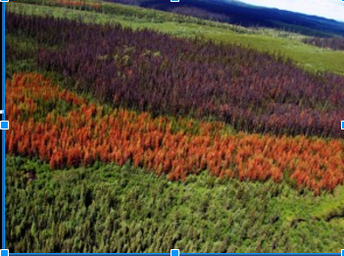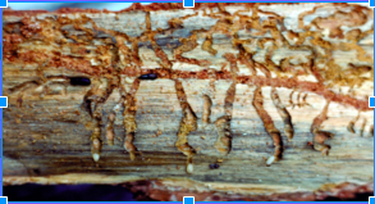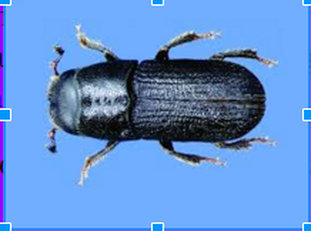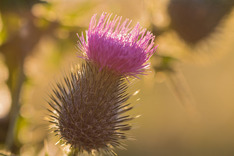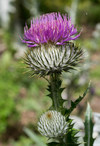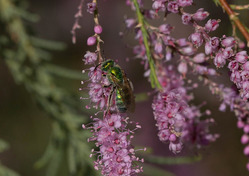Insects--Spruce BudWorm and Pine Beetle
Insects--Pine Beetle, Spruce BudWorm
Facts about the Pine beetle
Benefits of the Pine Beetle
Benefits of the Budworm
Facts about the Pine beetle
- “Once an outbreak gets going, there are none known treatments that can influence its spread”.
- “Pine beetles are killing pine and pine trees throughout the Rocky mountains.”
- “Although bark beetle outbreaks are natural, the outbreak is a major threat to regional economics and public safety.”
- Adults are reddish brown to black.
- Their size is about one eighth of an inch long.
- They are kind of a stoutly cylindrical shape.
- Pine beetles lay eggs between the bark and nutrient rich wood of the trees in late summer.
Facts about the Spruce BudWorm - The Spruce budworms live in places such as the Rocky Mountains from Arizona and New Mexico, Northward into Colorado, Utah, Wyoming, Montana, and Idaho.
- “The only way to control the spruce budworm is by aerial spraying, because most of the eggs laid by the worms hatch at the top of the tree.”
- The Budworm lives in the subalpine life zone.
- The way you can tell if a tree is budworm infested is by looking at one of the top branches and if they look brown and moth eaten or bare of needles you are looking at budworm damage.
- Hazards of the Pine Beetle
- “Bark beetles cause a substantial loss of trees and are recognized as part of natural conditions.”
- “Many species of bark beetles are harming lodgepole pine, ponderosa pine, limber pine, Engelmann spruce, subalpine fir and Colorado blue spruce”.
- “Winters with cold temperatures can kill beetle eggs larvae wintering under a tree's outer bark”.
- “Small amount of rain has aided a vast outbreak of beetles”
Benefits of the Pine Beetle
- One benefit of the pine beetle which is not always true is that if there are too many trees then some trees will not get as much water, nutrients and etc. Luckily the beetles may kill the weaker trees so that the stronger ones will become stronger and healthy because now they have more nutrients and things that will help them survive.
- Sadly though if the population of the beetle gets out of hand then all the trees could end up dying.
Benefits of the Budworm
- One benefit of the budworm is “dead trees can still be harvested and used for pulp but it takes more of this infected wood to make a tonne newsprint, and this process is more expensive”. “The bad quality fibre from the infected trees must be bleached to get rid of stains from the budworm and ensure an acceptable paper quality”.
- Although like the Beetles if there is too huge of an infestation then all of the trees could History of the beetle in Roaring Fork Valley
- “In the Roaring Fork Valley, only 9.2 percent of the forest is lodgepole and it’s so dispersed that it was not easily reachable by pine beetles”.
- The forest of the Roaring Fork Valley dodged the mountain pine beetle epidemic that turned much of Colorado’s mountain landscape brown. The mountain pine beetle has a history of events of it harming the Roaring Fork Valley.
Invasive Plants--Thistle and Tamarisk
Thistle
This is a Thistle. It has sharp needles on the margin and it grows in a group. There are many different species of the Thistle. The species in the picture is called the Bull Thistle. There are other ones called the Milk Thistle, Dwarf Thistle, Musk Thistle, etc.
What Are The Hazards of the Thistle?
The hazards of the thistle are that they grow in big groups. The reason that is so bad is because the thistle is considered an invader plant. It grows in disturbed soil and crowds out native plants that wildlife depends on for food.
What are the Benefits of the Thistle?
The benefits of the thistle are that the thistle is used for many helpful things. Their sweet nectar is used for food for butterflies and other insects. The nectar is also edible for humans, so it is in some medicines as well.
Tamarisk
This is Tamarisk. Tamarisk (also known as salt cedar) is a quick growing shrub or small tree from Eurasia. Tamarisk can grow as high as 25 feet tall. The bark on saplings and young branches is purplish or reddish-brown. Leaves are scale-like, alternate, with salt-secreting glands. Flowers are small and the petals are reddish, pinkish, or white. Each plant can produce as many as 500,000 seeds annually. The seeds are broken up by wind, water, and animals. Seeds are small with a hair attached to one end allowing them to float long distances by wind and water.
What Are The Hazards of Tamarisk?
Tamarisk is harming streams and river habitat. It is also displacing native vegetation such as cottonwoods, willows, and near dryland plant communities. Tamarisk is providing a bad habitat for livestock, wild animals, and birds. The growth and flowers of tamarisk provide little food value for native wildlife species that depend on nutrient-rich native plant resources. Tamarisk is increasing wildfire hazards. Lastly, it is limiting human and animal use of the waterways.
What are the Benefits of Tamarisk?
Tamarisk is a cure for many sicknesses and diseases. That includes Digestive Disorder, Heart Disease, Lung Diseases, Measles, and Skin Rashes. It is also nutrient to both humans and some plants. People say it tastes sweet as well as bitter. It is also a nutrient to leaves, flowers, twigs, and stems of plants.
DROUGHT

What are the Hazards of a Drought
- A drought means that there is a bigger risk of a wildfire since we have so many trees while living in the mountains.
- There is also the risk of non purified water which can cause health problems, like Giardia .
- It will dry up the soil so that no crops can grow and that means that we will not have any food.
What are the Benefits of a Drought
There are really no benefits of a drought but I can think of one thing.
- There will be less of a chance of a flood. Floods are really bad and have caused a lot of serious injuries or deaths.
- When there is a drought it forces people to conserve water. Some people just use water like we have a life long supply of it.
The Historical Events of a drought
- Over 20 years ago, there was a big winter drought it lasted from 1976 to 1977 and it sent shock waves through Colorado. There were bare ski slopes, but by 1978 heavy snows and spring rains were falling again.
- From 1950 to 1956, a drought was in the Great Plains and Southwest. Temperatures were hot and rain was scarce. In Texas, rainfall decreased by 40 percent between 1949 and 1951.
- The devastation of this drought came in three forms: pastures had dried up or had been choked by drifts of sand. Tumbleweeds had blown into tall hills, against fences, homes, and barns. This lasted from 1930 to 1939.
Credits
ttp://www.nps.gov/romo/learn/nature/mtn_pine_beetle_background.htm
http://csuhort.blogspot.com/2015/05/western-spruce-budworm-outbreak.html
https://csfs.colostate.edu/forest-management/common-forest-insects-diseases/western-spruce-budworm/
http://borealforestfacts.com/?p=510 http://wilderness.org/blog/understanding-mountain-pine-beetle-seven-facts-you-need-know
http://www.fs.usda.gov/detail/mbr/home/?cid=stelprdb5139168 http://www.state.sc.us/forest/refspb.htm
Grassland to Glacier Mutel and Emerick http://www.fs.usda.gov/Internet/FSE_DOCUMENTS/fsbdev2_043445.pdf http://www.bearmountainhoa.com/Budworm%20Fact%20Sheet.pdf http://forestry.usu.edu/htm/rural-forests/forest-management/forest-protection/western-spruce-budworm-in-utah/
1http://www.post independent.com/news/10912952-113/forest-report-valley-aces
ttp://www.nps.gov/romo/learn/nature/mtn_pine_beetle_background.htm
http://csuhort.blogspot.com/2015/05/western-spruce-budworm-outbreak.html
https://csfs.colostate.edu/forest-management/common-forest-insects-diseases/western-spruce-budworm/
http://borealforestfacts.com/?p=510 http://wilderness.org/blog/understanding-mountain-pine-beetle-seven-facts-you-need-know
http://www.fs.usda.gov/detail/mbr/home/?cid=stelprdb5139168 http://www.state.sc.us/forest/refspb.htm
Grassland to Glacier Mutel and Emerick http://www.fs.usda.gov/Internet/FSE_DOCUMENTS/fsbdev2_043445.pdf http://www.bearmountainhoa.com/Budworm%20Fact%20Sheet.pdf http://forestry.usu.edu/htm/rural-forests/forest-management/forest-protection/western-spruce-budworm-in-utah/
1http://www.post independent.com/news/10912952-113/forest-report-valley-aces
